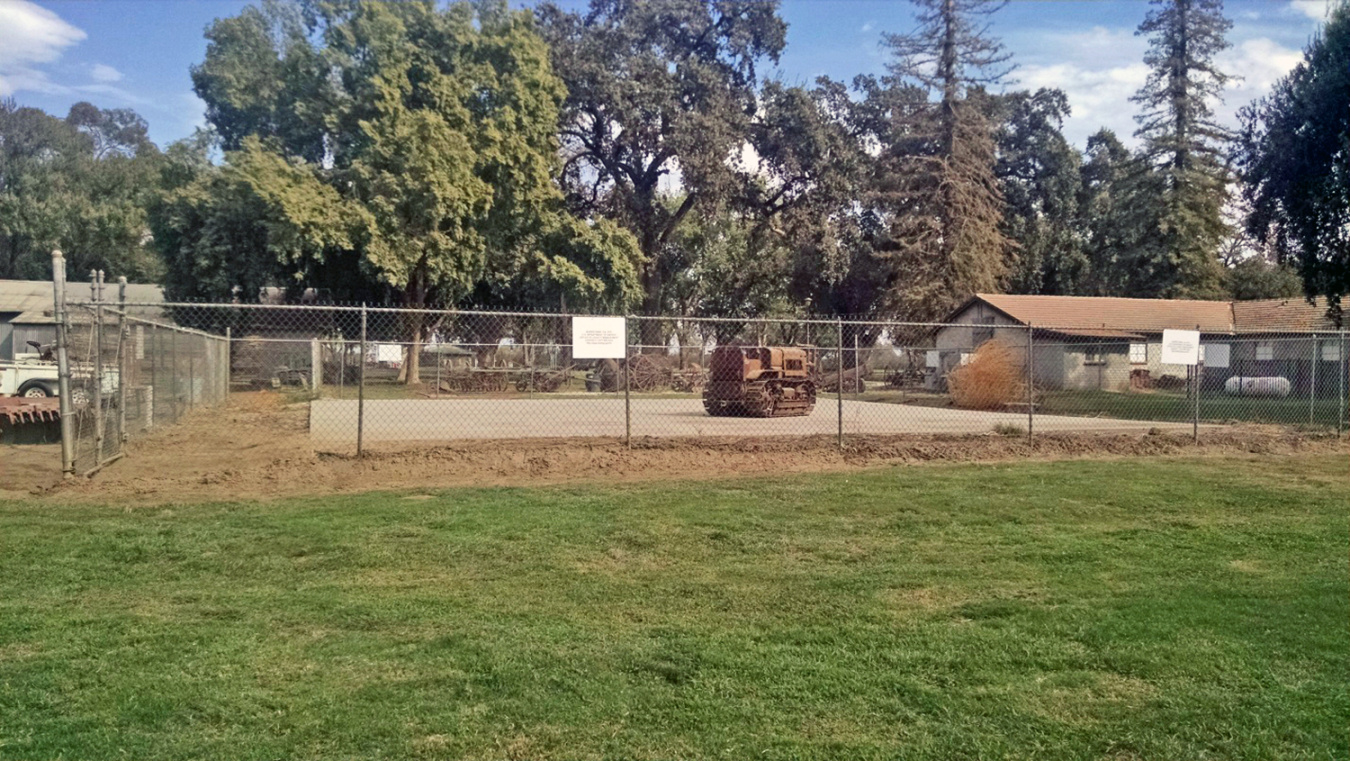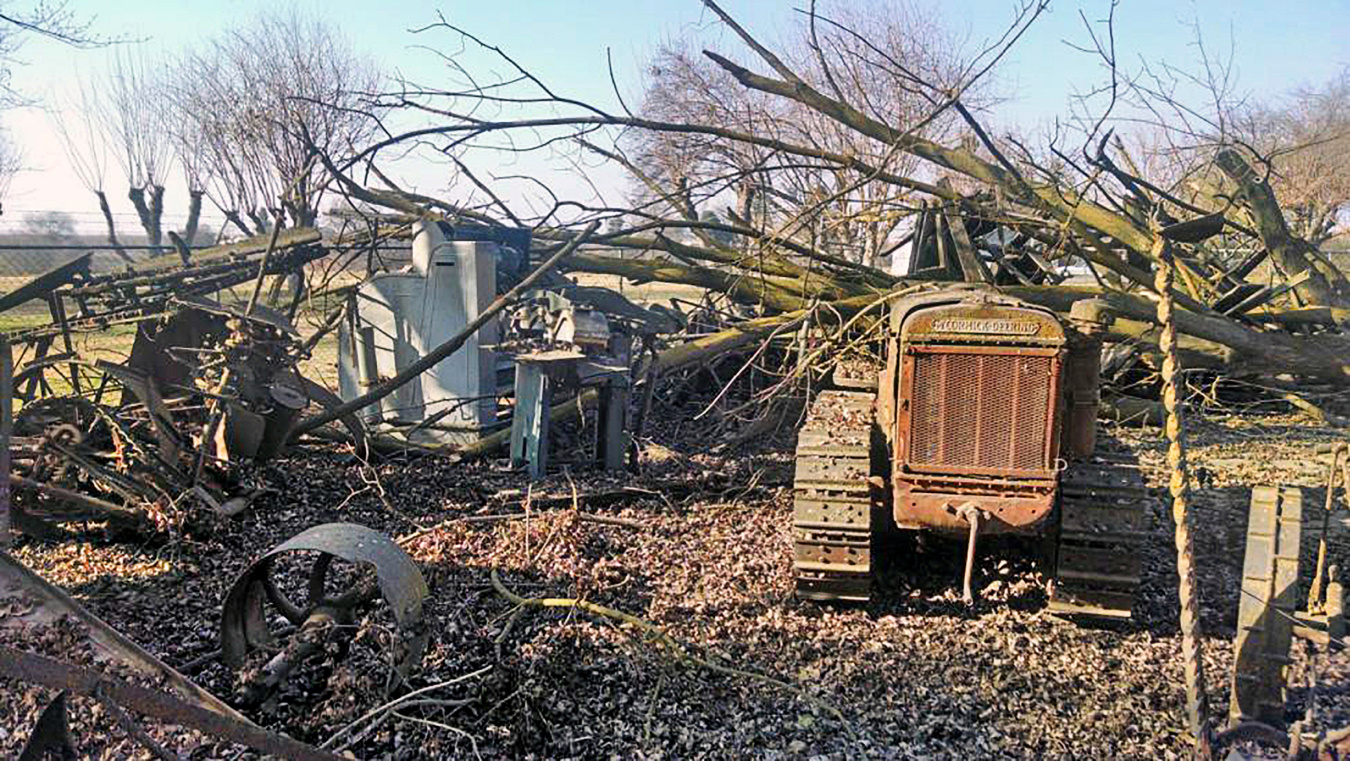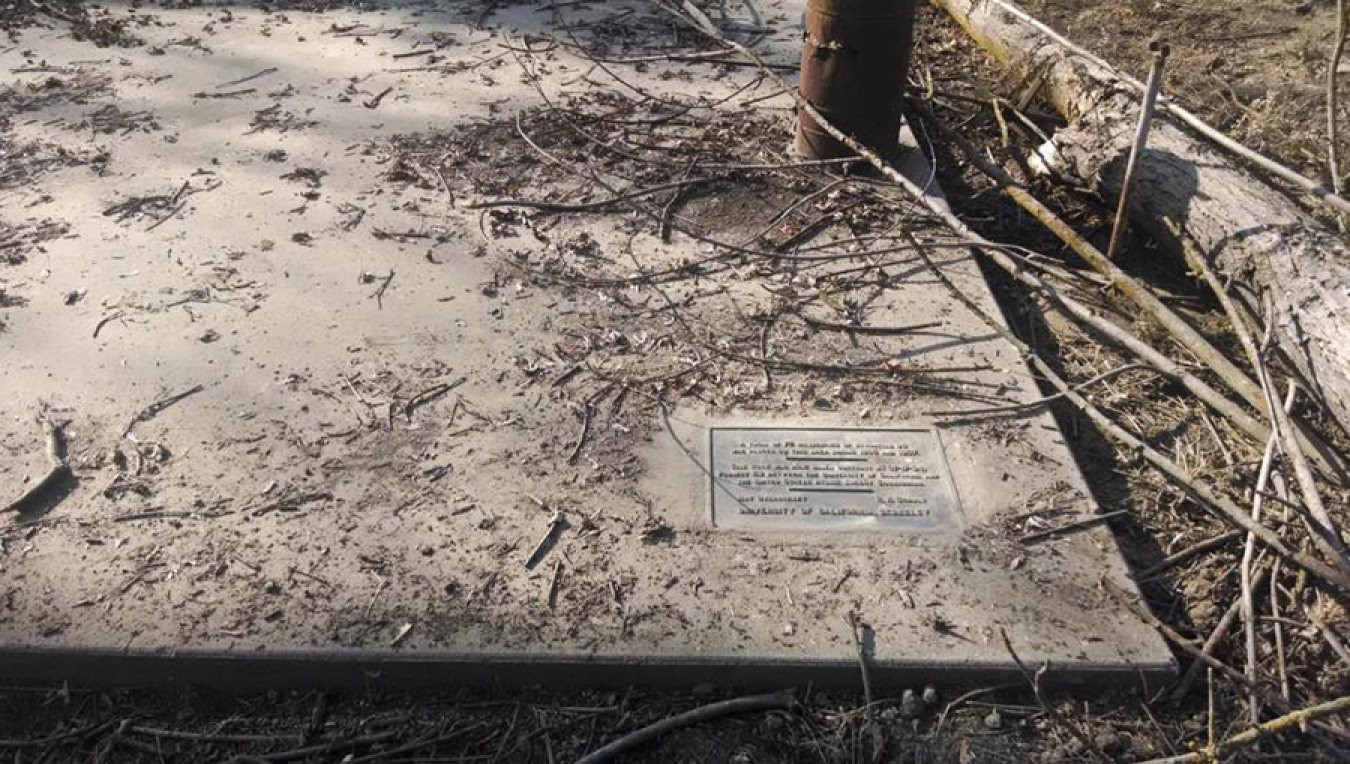The Burris Park, California, Site is located in Kingsburg, California, a rural agricultural community in the San Joaquin Valley, south of Fresno.
April 19, 2017
First annual inspection found the Burris Park site to be in good condition (2016).
The Burris Park, California, Site is located in Kingsburg, California, a rural agricultural community in the San Joaquin Valley, south of Fresno. The site consists of a 50-foot by 50-foot fenced area enclosing a 42-foot by 42-foot reinforced concrete slab. It is part of a 57-acre county park owned and maintained by the Kings County Parks and Grounds department.
It was at this site in 1956 that the U.S. Atomic Energy Commission (AEC) contracted the University of California, Berkeley (UC Berkeley) to establish a strontium-90 (Sr-90) research project known as the Burris Park Field Station. The site consisted of 49, 6-foot by 6-foot soil plots laid out in a square grid and separated by concrete barriers extending 30 inches into the soil and 6 inches above the ground. Three experiments using a total of 72 millicuries of Sr-90 were conducted to test the effectiveness of removing the radioactive strontium isotope from soil in the event of nuclear fallout. These studies were published in the university’s journal of agricultural science, Hilgardia, in 1959.
AEC terminated the tests in 1963 and UC Berkeley decommissioned the site under the same contract by filling the plots with sand, placing a 6-millimeter polyethylene liner over them, and constructing a 4-inch, metal-mesh reinforced concrete slab that covered the entire gridded area. A bronze plaque identifying the Sr-90 total activity and the UC Berkeley contact was imbedded in the northeast corner of the slab. The site was later used by Kings County to display antique farm equipment and eventually all but forgotten.

Plot interior, looking north, Burris Park, California, Site before LM stewardship (2015).
Stewardship
In 2013 UC Berkeley staff contacted the U.S. Department of Energy (DOE) Office of Legacy Management (LM) to discuss the site’s maintenance needs. LM representatives visited the Burris Park site January 22, 2014, and observed that the area was in disrepair. The protective concrete slab capping the Sr-90 test plots was covered with broken tree limbs and debris. Some pieces of the farm exhibit and a section of the chain-link fence surrounding the slab were crushed from fallen trees within the fenced area.
LM conducted extensive research into the site’s history to determine regulatory authority and responsibility. Burris Park was determined to be ineligible for inclusion in the DOE Formerly Utilized Sites Remedial Action Program in 1987 and again in 2014, as documented in the Elimination Report and Determination of LTS&M Authority for the Burris Park Field Station, Kings County, California (June 2014). However, because the AEC never issued a license for Sr-90 use, DOE, as a successor agency to AEC, submitted its authority to address “unacceptable conditions” at the site, including provisions for long-term surveillance and maintenance (LTS&M). The State of California, the Kings County Parks and Grounds department, and UC Berkeley were notified about the decision, and on November 26, 2014, the Burris Park site was assigned an LTS&M Category 2 level of care and formally added to the LM sites list. LTS&M activities associated with a typical Category 2 site include routine inspections, monitoring, maintenance, records-related activities, and stakeholder support.

Northeast corner of slab, looking west (2015).
Site Maintenance
March 2015
LM visited the site to determine the extent of work to be conducted and to confirm that no measurable contamination was on the slab’s surface. The Burris Park site contained four large maple trees. Two were alive, and two were dead and fallen. UC Berkeley developed and implemented a sampling plan to determine the Sr-90 uptake of the four trees on the site, and a background tree in another area of the park. The sampling plan defined the criterion for contamination from Sr-90 as concentrations that were greater than or equal to three standard deviations above background (bkg + 3 SD). The dead T-3 and T-4 trees average analytical results were above bkg + 3 SD, averaging 1.7 picocuries per gram and 0.30 picocuries per gram, respectively. Live tree T-1 and T-2 sample results both averaged less than bkg + 3 SD.
July 2015
LM requested that Kings County remove the antique farm equipment, and initiated cleanup, including: repairing the fence, cleaning the concrete slab, and cutting and stacking wood from the fallen trees. In addition, the two live trees were removed (cut and stacked) to ensure that no future strontium uptake was possible and to insure that the Sr-90 enclosure remained intact.
September 2015
LM completed site maintenance by subcontracting the packaging and offsite disposal of the tree debris to EnergySolutions low-level waste disposal facility in Clive, Utah; posting the fence with LM contact information; and removing any new perennial vegetation from the site. Although T-1 and T-2 material was determined to be statistically clean, the State of California has no formal Sr-90 guidelines; therefore, all tree material was disposed at the EnergySolutions facility.

Southeast corner of slab, looking northwest (2015).
December 6, 2016
The first annual inspection was conducted and the site was found to be in good condition and compliant with the criteria set forth in the Burris Park, California, Site Long-Term Surveillance and Maintenance Plan (LTS&M Plan) (DOE 2016). The LTS&M Plan establishes how LM will maintain the site to ensure it remains protective until the Sr-90 no longer poses a radiation threat to human health and the environment. It is estimated that 20 millicuries Sr-90 currently remain in the Burris Park site enclosure. Based on the isotope’s natural decay rate, the site will meet unrestricted use criteria around the year 2240.
Immediately following the site inspection, a long‑term stewardship discussion was held by LM with the Kings County Parks, the California Department of Health, the LM support contractor, and UC Berkeley representatives in attendance. The forum discussion focused on an in-depth stewardship strategy designed to get input from regulators, the county, and other interested parties, when considering the future of the park and the surrounding areas, as well as a regulatory perspective as to how the site can be managed to best protect the community and the environment. The members came to consensus on all stewardship initiatives. The most significant point for the path forward is that LM will retain responsibility for the site and maintain the fence and concrete containment until Sr-90 activity within the enclosure reaches background concentrations.

